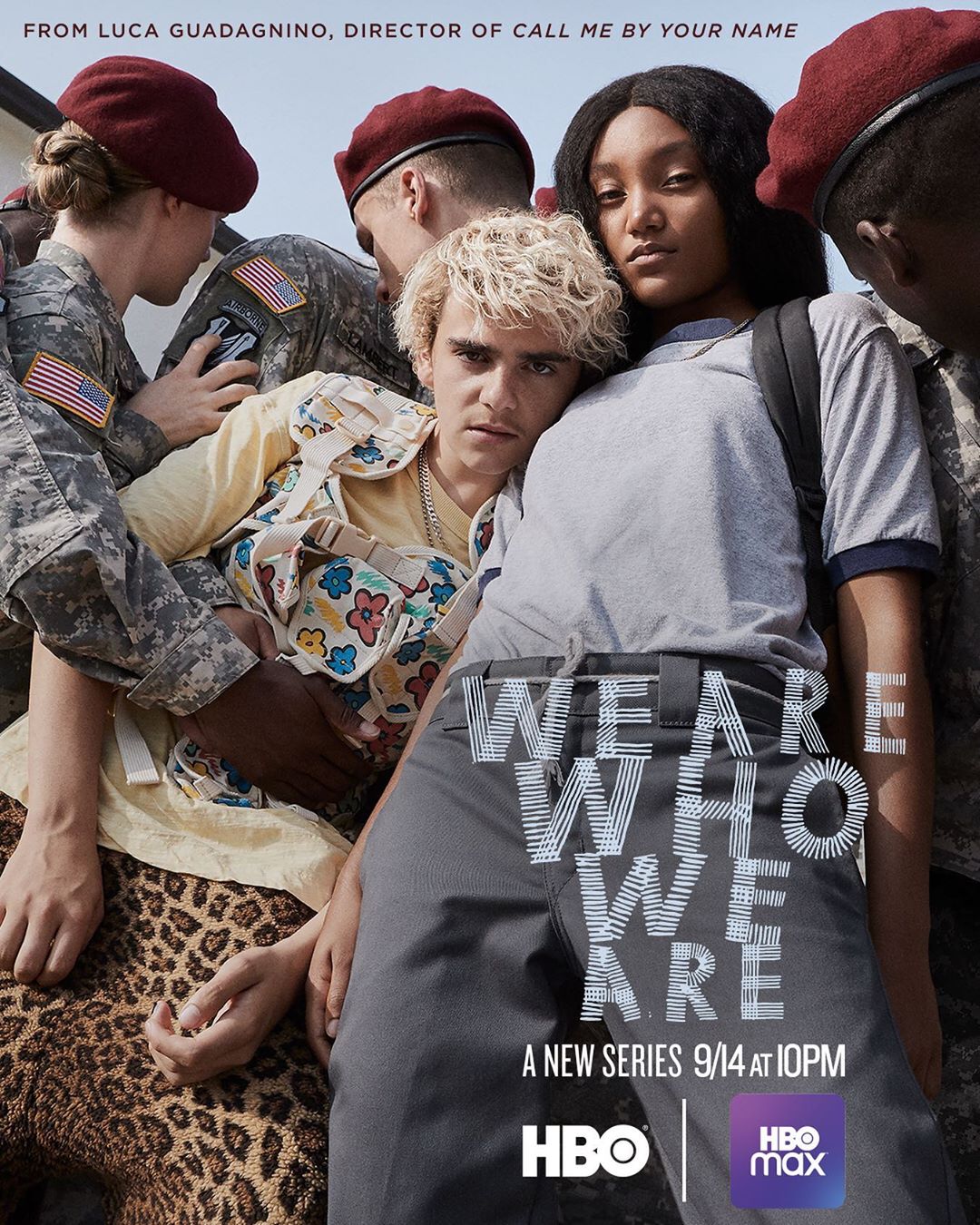With HBO’s newest series, “We Are Who We Are,” director Luca Guadagnino returns to his dramatic roots after his 2018 adaptation of the Italian horror film “Suspiria.” Instead of staying within the trappings that the coming-of-age genre might entail, “We Are Who We Are” captures the transformative nature of identity, much like Guadagnino’s critically acclaimed “Call Me by Your Name.” However, Guadagnino’s exploration of the current socio-political landscape adds nuance to his formula.
“We Are Who We Are” focuses on two entirely different families living on an Italian military base, which was built just for the show. Fraser, played by Jack Dylan Grazer from the 2017 adaptation of “It,” lives with his lesbian parents, Maggie and Sarah. Sarah happens to be the new commander of the base, sparking conflict because of her identity as both a woman and a lesbian.
Caitlin, played by first time actor Jordan Kristine Seamón, is a part of a nuclear family. Caitlin’s father, played by Kid Cudi, is a soldier on the base and immediately sees Sarah as an unworthy candidate for commander. The conflict between Caitlin’s father and Sarah is never directly addressed and explained, but the aged mentality that he demonstrates throughout the show exemplifies an intolerance towards her lifestyle.
Despite living in polar opposite family structures, Fraser and Caitlin form an intense bond. Fraser implores Caitlin to explore her identity and find the “who we are” part of the show’s title, and she finds comfort in him because of this. Caitlin does not hate her family and who she was, but she discovers the transformative nature of identity that she was denied for so long.
The nuance that Guadagnino adds, however, is that each character in the show, no matter if the viewer may ideologically disagree with them, has depth. Caitlin’s father, Richard, exemplifies the thoughtful character writing as he could represent the stereotypical ignorant parent that restricts their child from exploring their life. However, Richard genuinely cares for his daughter and wants the best for her, which offers an interpretive perception of the character. In a similar fashion, Fraser may be loving and accepting to Caitlin, but he also treats his mother Sarah with violence and contempt. Fraser’s impulsivity could just be simplified to annoyance, but the origin of his nature could also be pinned to the emotional distance Sarah raised him with.
To make “We Are Who We Are”’s cast believable, the cast needs to rival the talent of the writing. Thankfully, the entire cast fits their selective characters well, especially Kid Cudi. Cudi’s performance is not a bombastic display of acting talent, but the reserved way he portrays Richard is just as fantastic. Jack Dylan Grazer and Jordan Kristine Seamón fit their starring roles perfectly. As the relationship between Caitlin and Fraser grows, the duo showcase a wide variety of emotions with ease and authenticity.
In addition to the immensely detailed script and well cast actors, Guadagnino injects the story with visual flair. The beautiful cities and landscapes of Italy are captured with authenticity, both showcasing the beauty of Italy and Guadagnino’s ability to frame it. Similarly to Guadagnino’s “Call Me by Your Name,” the emotions of the characters are expressed through the vibrance of their surroundings, showing that Guadagnino feels just as strongly about these emotions as the characters do. The cinematography relies on the equally tumultuous and timid emotional landscape of the show’s cast, offering bombastic and fluid handheld camerawork, as well as still and patient frames. Despite creating an inconsistent visual style, the cinematic method perfectly conveys the impulsivity and irregularity of adolescence.
Composer Devonté Hynes, also known as Blood Orange, adds his own mix of synth and various instruments to the musical score of the show. While the soundtrack comprises of various artists Caitlin and Fraser enjoy like Frank Ocean or Kendrick Lamar, Hynes’ score complements Guadagnino’s style very well. The soundtrack may characterize Caitlin and Fraser throughout the show, but Hynes’ score communicates their internal development. The universality of these emotions is composed into each track of Hynes’ score, transforming each step these characters take in finding themselves into resonant and impactful moments.
The erratic nature of the show does prevent the narrative from reaching a warranted conclusion, however. The buildup climaxes in episode seven with great resolutions for each of the side characters, and the finale needed to deliver a proper conclusion to Fraser and Caitlin’s relationship. Despite the last 20 minutes of the episode providing an emotional and challenging climax for the characters, the rest of the runtime repeats certain moments from earlier episodes. The final episode still exemplifies the beautifully vibrant cinematography and energetic music, so the entire season works as a short series. However, if the finale were to be as exciting as the rest of the season, “We Are Who We Are” would have been a perfect coming-of-age story.
“We Are Who We Are” does falter with its conclusion, but the rest of the show is so challenging and intriguing that the experience earns a 9 out of 10.




